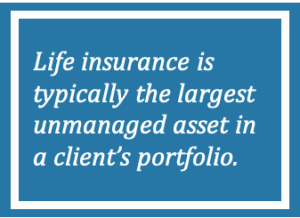Some Known Details About Pacific Prime
Table of ContentsThe Best Strategy To Use For Pacific PrimeThe Ultimate Guide To Pacific PrimeAbout Pacific PrimeSome Known Incorrect Statements About Pacific Prime
In many states, the insurance company is needed to send you a duplicate of the changes to your policy. It is essential that you check out Recommendations or Bikers so you recognize just how your policy has actually transformed and if the policy is still adequate to meet your requirements. To acquire a copy of your insurance policy, please contact your insurance coverage representative or firm.
The Institute of Medication (IOM) Board on the Effects of Uninsurance launches an extended evaluation of evidence that addresses the significance of health insurance coverage with the publication of this record. Insurance coverage Matters is the very first in a series of 6 records that will certainly be issued over the next 2 years recording the truth and effects of having actually an estimated 40 million people in the USA without wellness insurance protection.

What Does Pacific Prime Do?
The goal of this collection of studies is to redouble plan attention on a longstanding issue. Following the longest economic growth in American background, in 1999, an estimated one out of every 6 Americans32 million grownups under the age of 65 and greater than 10 million childrenremains uninsured (Mills, 2000).

10 percent of the population accounts for 70 percent of healthcare expenditures, a relationship that has actually stayed continuous over the previous three decades (Berk and Monheit, 2001) - expat insurance. Therefore medical insurance remains to serve the function of spreading threat also as it progressively funds routine treatment. From the perspective of health and wellness care providers, insurance coverage brought by their patients helps protect an earnings stream, and communities gain from financially practical and steady health and wellness care practitioners and institutions
Government offers health insurance coverage to populations whom the personal market may not serve efficiently, such as handicapped and senior citizens, and populaces whose accessibility to wellness treatment is socially valued, such as kids and expecting ladies. The best ends of medical insurance protection for the individual and areas, including office neighborhoods of employees and companies, are enhanced health outcomes and lifestyle.
The 10-Second Trick For Pacific Prime
Employees rate wellness insurance coverage first by much in value among all the advantages offered in the work environment (Salisbury, 2001). Although there have been large financial investments of personal and public funds to provide wellness insurance policy, several people still have no coverage. Despite extensive reporting of study findings and wellness care research study results, the basic public stays overwhelmed and misinformed regarding Americans without medical insurance and the implications of lacking protection.

Without concern, the complexity of American wellness care funding devices and the wealth of sources of details include in the public's complication and suspicion concerning health insurance coverage data and their analysis. This report investigate this site and those that will comply with goal to distill and offer in conveniently understandable terms the comprehensive research study that births on inquiries of medical insurance coverage and its value.
Fifty-seven percent of Americans questioned in 1999 thought that those without health insurance coverage are "able to get the care they require from medical professionals and hospitals" (Blendon et al., 1999, p. 207). In 1993, when national attention was focused on the problems of the uninsured and on pending health care regulations, just 43 percent of those polled held this belief (Blendon et al., 1999).

They likewise receive less preventative solutions and are much less likely to have regular look after persistent problems such as hypertension and diabetes. Persistent illness can cause pricey and disabling difficulties if they are not well taken care of (Lurie et al., 1984; Lurie et al., 1986; Ayanian et al., 2000). One national survey asked greater than 3,400 grownups regarding 15 highly significant or dark conditions.
Excitement About Pacific Prime
Added evidence is presented later on in this chapter in the discussion of insurance coverage and access to wellness care. http://tupalo.com/en/users/6478264. People without wellness insurance coverage are young and healthy and pick to do without protection. Virtually fifty percent (43 percent) of those checked in 2000 believed that individuals without health insurance are most likely to have health issue than people with insurance policy
Voters and plan makers in emphasis group conversations define those without insurance policy as youths who have the possibility to be covered and feel they do not need it (Porter Novelli, 2001). Contrasted to those with at the very least some exclusive insurance coverage, the uninsured are less most likely to report being in exceptional or great wellness (Company for Healthcare Study and High Quality, 2001).
RESOURCE: Facility for Cost and Funding Studies, Firm for Health Care Study and High quality, based upon MEPS data. Youthful adults between 19 and 34 are even more likely to do not have health and wellness insurance policy than any kind of various other age. This is mainly because they are less often eligible for employment-based insurance coverage as a result of the nature of their job or their brief period in it.
The understanding that people without insurance coverage have better-than-average health adheres to from confusing the reasonably young age profile of the uninsured with the better health and wellness, generally, of younger persons. This obscures the web link between wellness standing and health and wellness insurance. For those without accessibility to work environment health and wellness insurance, inadequate health is a potential obstacle to buying nongroup protection because such insurance coverage might be highly priced, omit preexisting conditions, or be just inaccessible.